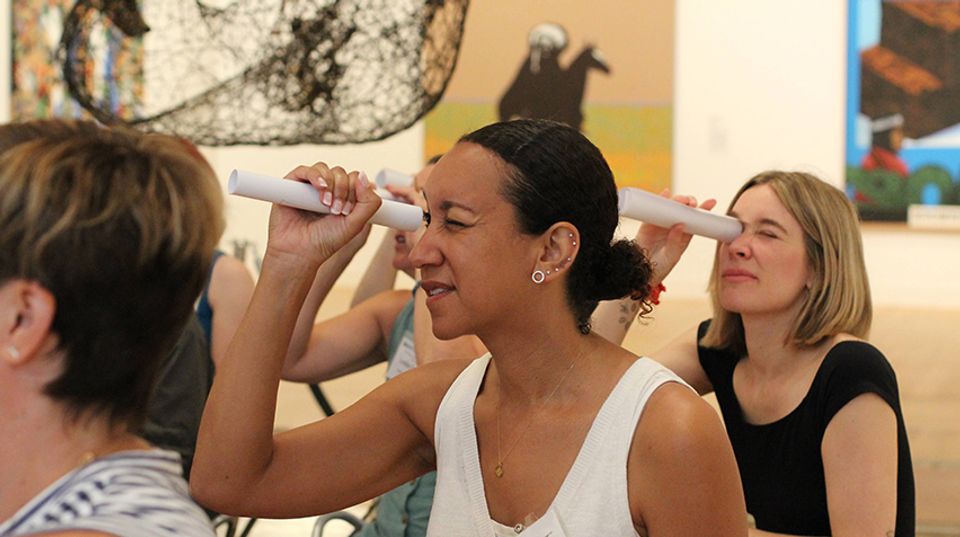
American Art's lighting designer, Scott Rosenfeld updates us on new developments in museum lighting.
"We only see light." That's what Mr. Schoor, my high school physics teacher, told me and I thought he was full of it. He tried to explain that what we see are reflections of light off stuff, not the actual stuff. "Whatever," my adolescent-self thought. "Stuff is stuff and I can see the stuff in front of me so what's the difference?"
Twenty-five years later, I now get it. And Mr. Schoor has been foremost in my mind in my job as the lighting designer leading American Art's collaboration with the Department of Energy to test LED lighting. Until recently incandescent lighting was practically the only choice for art museums because the light was bright, could be focused into narrow spotlights, and the color was good. Unfortunately, incandescent lighting is grossly inefficient. Even so, it's been barely a year since other lighting sources, like LED retrofit spotlights, approached the quality of our beloved incandescents.
The American Art Museum is keenly aware that changing the lighting source will change what we see (thank you Mr. Schoor), so we've been working with vision scientists at the National Institute of Standards and Technology to insure the color of our new lighting sources provide the highest quality rendering for our artworks. One series of tests we did was to use a spectrometer to actually measure the light being reflected off the artwork.
After exhaustive testing, we identified four galleries—two in the museum's main building and two at its Renwick Gallery—in which to test various manufactures LEDs; early results indicate these LEDs produce light of equal quality to our existing incandescents and use up to 75% less electricity. To my relief, the big story is that there is no story. The galleries illuminated with LEDs look almost identical to the galleries lit with incandescent.
LEDs are still an emerging technology and therefore don't have a long track record, so with the Department of Energy's help we will periodically send sample LEDs from our galleries to an independent lab for testing. Because LEDs last up to 50,000 hours, it will take several years to determine if they live up to manufacture claims of long life and stable color. American Art is also working with conservation scientists at the Getty and the National Gallery, London to insure that the new LED lighting is less damaging to artworks.
As an aside, I am now totally comfortable with the idea that everything we see is reflected light, and I wanted to demonstrate this phenomenon to my six-year-old son. So, I turned off the lights: no light = no vision. Then we turned the lights back on and voilà! Thank you Mr. Schoor.
Related post: Lighting the Preamble

















